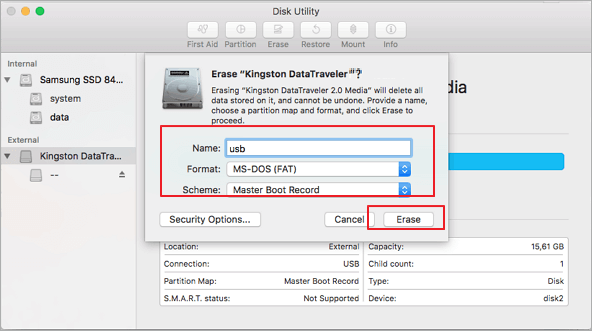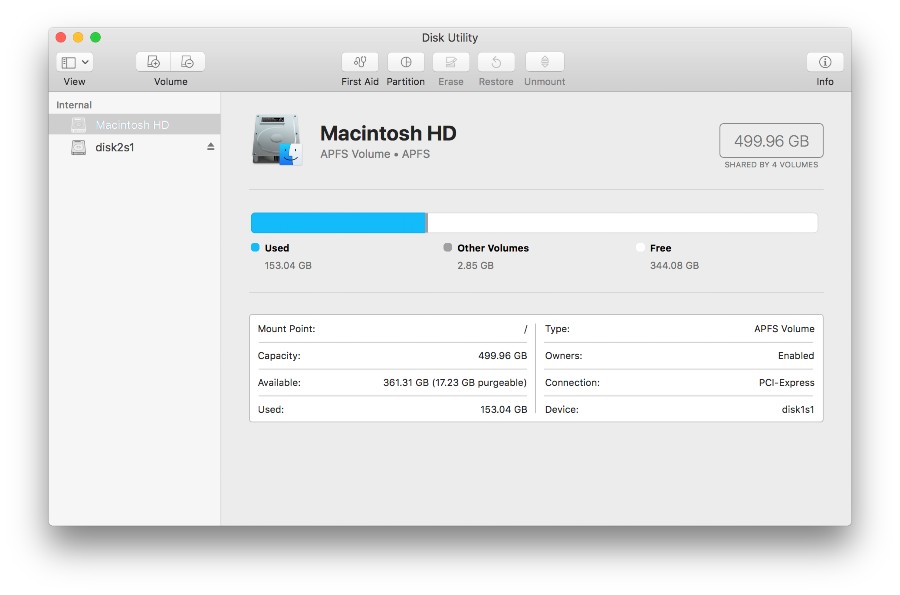

- #MAC FORMAT USB FOR MAC AND WINDOWS MAC OS#
- #MAC FORMAT USB FOR MAC AND WINDOWS INSTALL#
- #MAC FORMAT USB FOR MAC AND WINDOWS WINDOWS 10#
- #MAC FORMAT USB FOR MAC AND WINDOWS PASSWORD#
Type "diskutil list" and hit the enter/return key to see a list of all connected drives. Again, you will need a USB drive.Ĭonnect your USB drive to the Mac and then launch Terminal.
#MAC FORMAT USB FOR MAC AND WINDOWS WINDOWS 10#
The Terminal app is more complicated to use than other methods however it does not require you to use a third-party application in order to create a Windows 10 bootable USB drive. This will have created a Windows 10 bootable USB using a Mac that can now be used on your PC. You can now quit Bootcamp and then Eject the USB to safely remove it.

Once the process has been completed by the Bootcamp Assistant, the USB will have been renamed. Keep this in a location that is easily found (such as the Downloads folder).īootcamp will locate the downloaded iso file automatically however if it is not found, you can use the "choose" button to locate it manually.Ĭlick on Continue and wait until the USB is formatted and set up to become a bootable drive. iso file from the Microsoft website or another reliable site. Then click on continue.ĭownload a Windows 10.
#MAC FORMAT USB FOR MAC AND WINDOWS INSTALL#
Tick the box for "create a Windows 7 or later version install disk" and uncheck the "Install Windows 7 or later version" option. Please note that Boot Camp is not supported in macOS Mojave and later. In order to create a bootable USB using Boot Camp, you will require a USB that has 16GB of storage, or more.
#MAC FORMAT USB FOR MAC AND WINDOWS PASSWORD#
WARNING:Formatting the drive will erase all data on the drive, so you should copy any data you want off the drive prior to formatting.Additional Tip: One Click to Create Windows 10 Bootable USB to Reset Password
#MAC FORMAT USB FOR MAC AND WINDOWS MAC OS#
Set Format to Mac OS Extended (Journaled) Check step 2 to confirm Disk Utility is Showing All Devices. NOTE: If you don’t see Scheme, then make sure that all devices are showing and the non-indented entry is selected. Select the non-indented entry, you will see Media in the nameĬlick the button labelled Erase in the menu which will bring up this window.Click View in the upper left and select Show All Devices.To open Disk Utility - Open Finder > Applications > Utilities > Disk Utility IMPORTANT: Reformatting the drive will erase all data on the drive, so you should copy any data you want off the drive prior to formatting. If you need to go between macOS and Windows then format your drive ExFAT on macOS



 0 kommentar(er)
0 kommentar(er)
